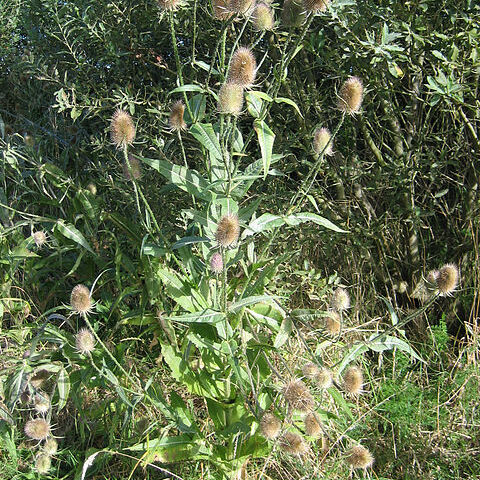Erect perennial herbs with aculeate, or rarely smooth, stems. Leaves pinnatipartite or entire, sometimes the stem-leaves connate at the base. Inflorescences terminal or terminal and lateral. Heads involucrate with 1 or 2 rows of foliaceous often spine-tipped bracts of variable length. Bracts of the receptacle acute, chartaceous and spine-tipped, usually shorter than the involucral bracts. Involucel with or without a narrow cupular limb and developing 8 longitudinal furrows. Calyx cupular, small, undulate or minutely toothed, usually pubescent or pilose. Corolla 4-fid, unequally lobed. Stamens 4, exserted. Stigma entire, rarely shortly bifid.
Biennial herbs; stems prickly and often grooved, ± erect and branched above. Lvs opposite, crenate-serrate to entire, often prickly. Infl. a globose to cylindric capitulum; involucral bracts linear to lanceolate, each with a prominent apical spine; receptacular scales subtending each fl., spine-tipped. Involucel ± 4-angled, ending in a short ± 4-lobed cup. Calyx ciliate, persistent at fruiting. Corolla usually 4-merous, long-tubular, zygomorphic. Stamens 4. Fr. 4-angled, with appressed hairs.
Cal short, 4-angled or 4-lobed, hairy; cor 4-lobed, the marginal ones not enlarged; involucel 4-angled, truncate or 4-toothed at the top; involucral bracts slender, often elongate; receptacular bracts ovate or lanceolate, acuminate into an awn surpassing the fls; tall biennial or perennial herbs, little branched, with prickly stems, large, sessile or even connate lvs, and small fls in dense, ovoid to cylindric heads. 10+, Europe, w. Asia, n. Afr.

